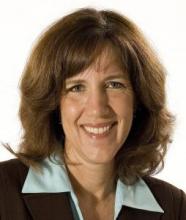Mix Oncology Care And Speed Dating

In late 1998 in a café in Beverly Hills, a group of single people were brought together for the expressed purpose of meeting each other in one-on-one settings, seeing what they might have to share and deciding if there was enough commonality among certain participants to talk again. And thus, so the legend goes, the concept of speed dating was born.
Since that time, speed dating has taken on numerous iterations as part of the pop culture of the 21st century. Finding applicability beyond romantic matchmaking, speed dating has even become a common business practice in China as a way for business people to meet and see if they have similar business objectives and synergies.
If it can work in Beverly Hills and China, why not at Loma Linda? And if it can work in dating and business, why not in healthcare? After all, is there any industry where coordination, collaboration and communication are more central to good outcomes than in healthcare?
In life, the most difficult challenges are often solved based on the relationships one has developed. Those relationships can provide wisdom, comfort, perspective and energy. Healthcare is no different.
The best healthcare is a team sport. Sadly however, hospitals breed silos as business models, budgets and incentives are historically built around individual departments. But the important thing isn’t the department – it’s the patient. So the real challenge is getting people to come out of their traditional environment so there can be communication and a balanced expertise applied to each patient’s individual needs.
Enter speed dating.
Earlier this year, Loma Linda University Medical Center opened a new women’s cancer and surgical oncology center. In both physical configuration as well as philosophical approach, the center is designed to encourage coordination and communication among all of the participants involved in a patient’s treatment. As such, we took the unique approach of bringing gynecology and surgical oncologists together with medical and radiation oncologists all under one roof. And we’ve built a physical space that allows for nurses, therapists, counselors and the patients and their families to participate in the care coordination and decision making process.
Embracing the speed dating approach to relationship building, we provided the atmosphere for medical oncologists to speak with radiologists, physicians to speak with surgeons, hematologists to speak with pathologists. This may sound basic, but the sad truth is that in too many environments, this simply doesn’t happen. Meeting and talking has led to the creation of “teams” built around disease types rather than professional credentials…all focused on how best to treat a certain type of cancer. And all committed to honing each other’s ideas, values and input so patients have options in their treatment and approach.
Loma Linda University also has a strong commitment to medical research. But the best science is close to where the patients are. So leveraging the power and possibilities of speed dating, we have been able to forge unique partnerships between science/academia and clinical practitioners (both physicians and surgeons) to help assure that patients have access to the latest scientific advances in the prevention, detection and treatment of cancer.
This idea of bringing together people interested in solving a problem has led to the creation of the Center’s bio-specimen lab. Created not by any one discipline but rather as a shared resource, this lab provides a unique setting for practitioners from a wide array of disciplines to come together, cross-fertilize ideas and advance the cause of cancer treatment.
With the movement toward accountable care organizations, there is much talk surrounding the need to form partnerships between physicians, hospitals and health plans responsible for taking care of entire populations in defined geographic market. But let’s not forget that the best partnerships start at home through listening, talking, understanding and sharing.
Judy Chatigny is executive director of the Women’s Cancer and Surgical Oncology Center at Loma Linda University Medical Center in Loma Linda, Calif.






